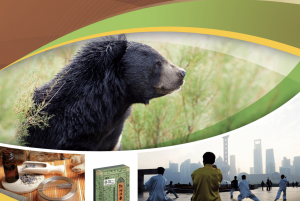Trade bans can work. In the short term, they can provide breathing space for species in sudden and immediate danger, so that the drivers of trade can be identified and remedial actions implemented.
This can be the case where the volume of trade is so large and the velocity so high that a trade ban is appropriate through application of the Precautionary Principle, which requires erring on the conservative side when making a decision to decrease protection [1,7]. A ban may give the population time to recover, yet trade bans can also backfire, meaning they may have worse outcomes than being ineffective or causing inefficient allocation of resources. A sharp increase in poaching and rise in commercial value may coincide with their implementation (or even announcement thereof) [8, 11]. When a “Perfect Storm” exists, a trade ban may be the final blow to an endangered species. Three species, the tiger, elephant and rhino, illustrate this situation.
The tiger, Panthera tigris, is listed as “Endangered” on the IUCN Red List of Threatened Species [12]. Comparing today’s wild tiger populations with those two tiger generations ago in the 1990’s suggests a decline of over 50% [12]. The breeding population, considered to be a key indicator of the health of the species, has declined by more than 20% during the last two tiger generations, and this decline may not be reversible [12]. Three of the original eight sub-species have gone extinct since the 1950s, and it is thought that a fourth is also extinct [12,13]. All tiger sub-species were listed on Appendix I in 1975, with the exception of the Amur tiger, which was listed in 1989.




